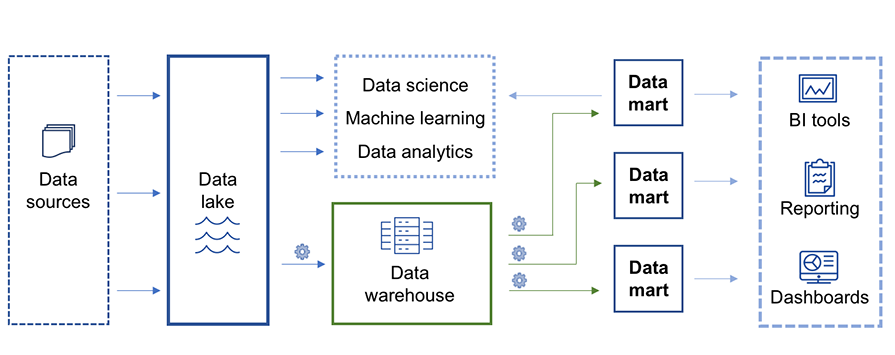Enterprises across industries are looking for a scalable, flexible, and adaptable data storage solution that supports a multitude of use cases, delivers real-time insights, and provides a unified view of all enterprise data.
Data stores (also called repositories) form the nervous system of any storage architecture on-premise or on the cloud. These repositories can be in the form of data lakes, data warehouses, or data marts – each of which serves a different purpose. If designed correctly, these repositories can complement each other and empower you with the business intelligence tools, reporting, and dashboards you need to run your business efficiently.

Let’s take a quick look at what differentiates the three different types of storage repositories:
- Data lake – A central repository of data in raw formats, which can be leveraged to support various workloads, applications, and analytics
- Data warehouse – A repository where data is selected, organized, structured, and often transformed for business intelligence purposes before being stored
- Data mart – A subject-oriented database containing summarized data collected for analysis on a specific business line/department of an organization – like Sales












